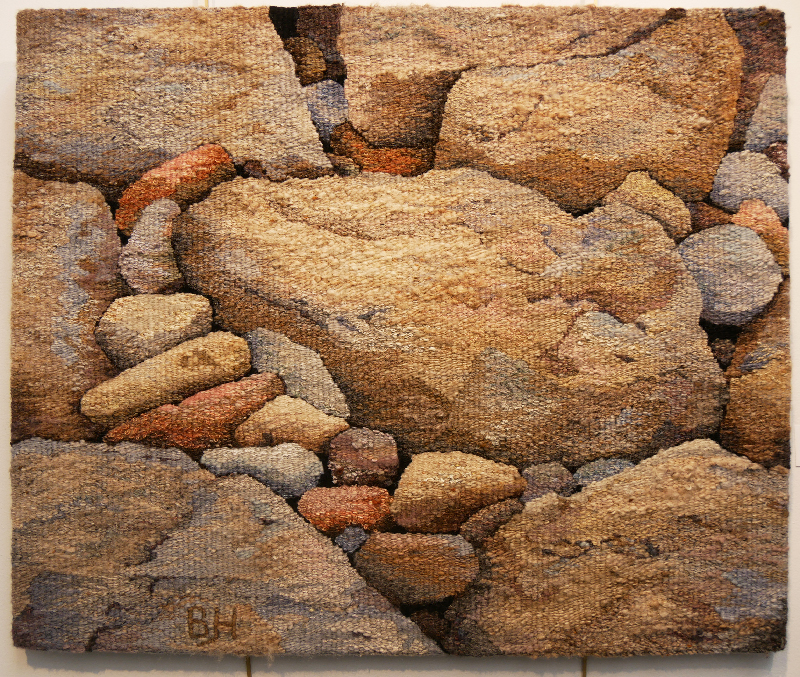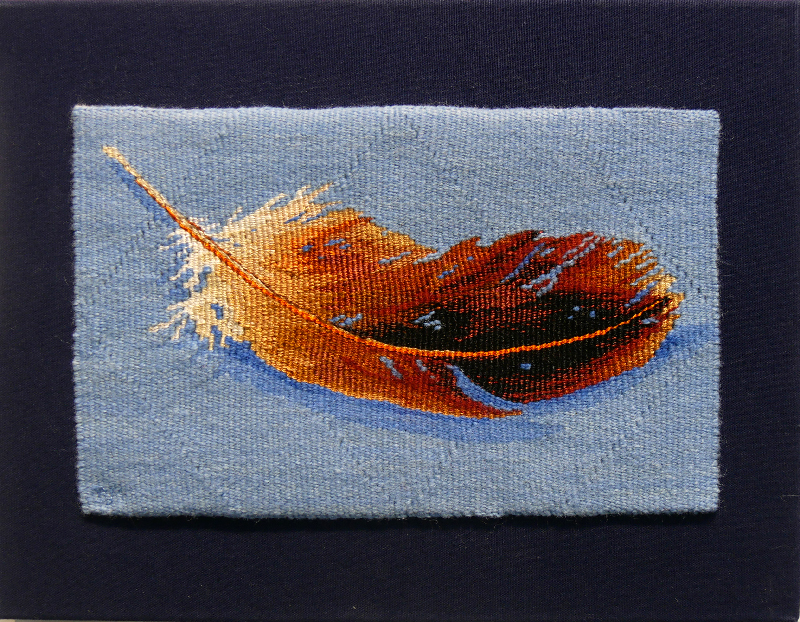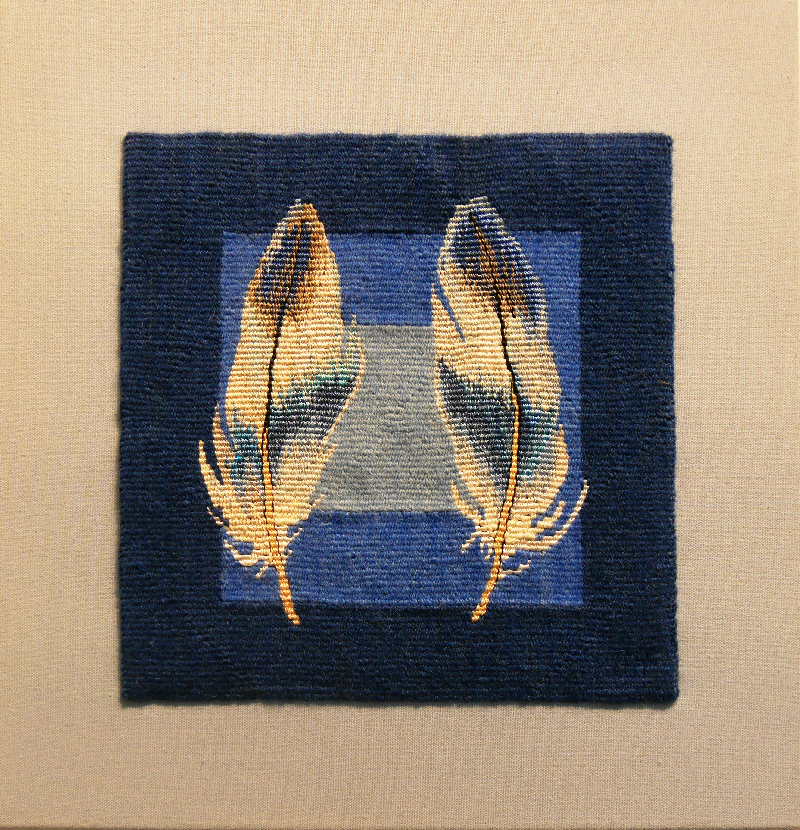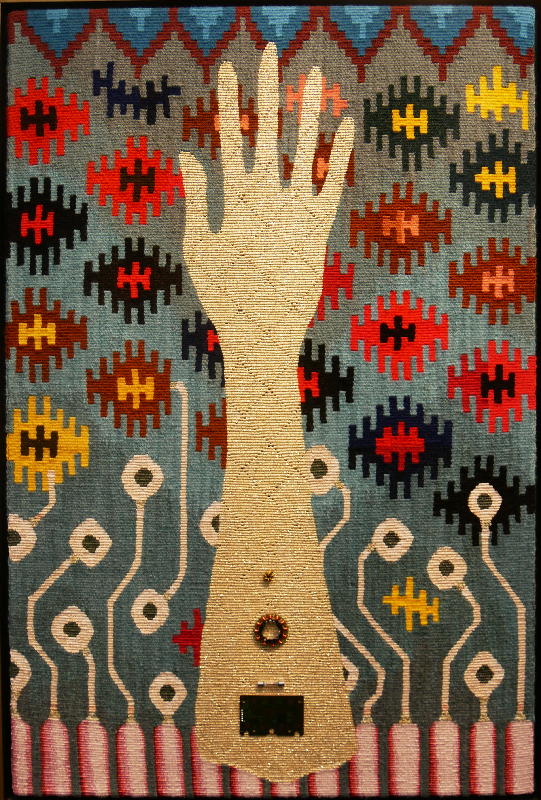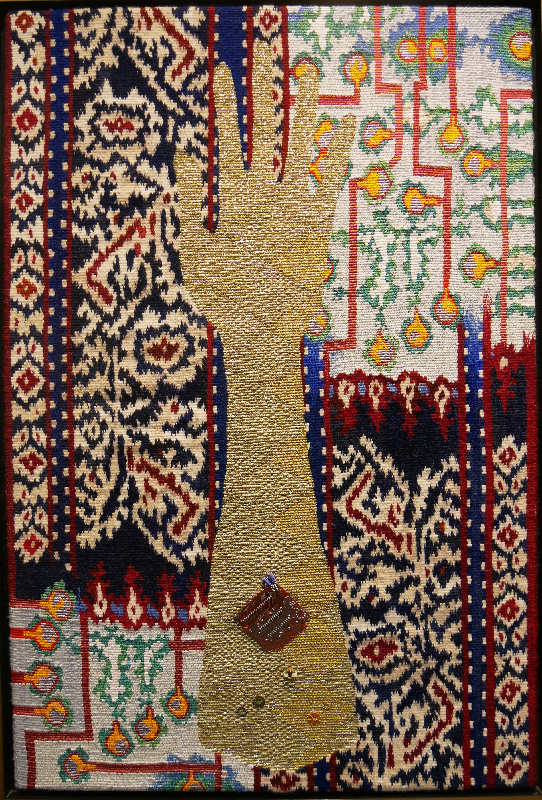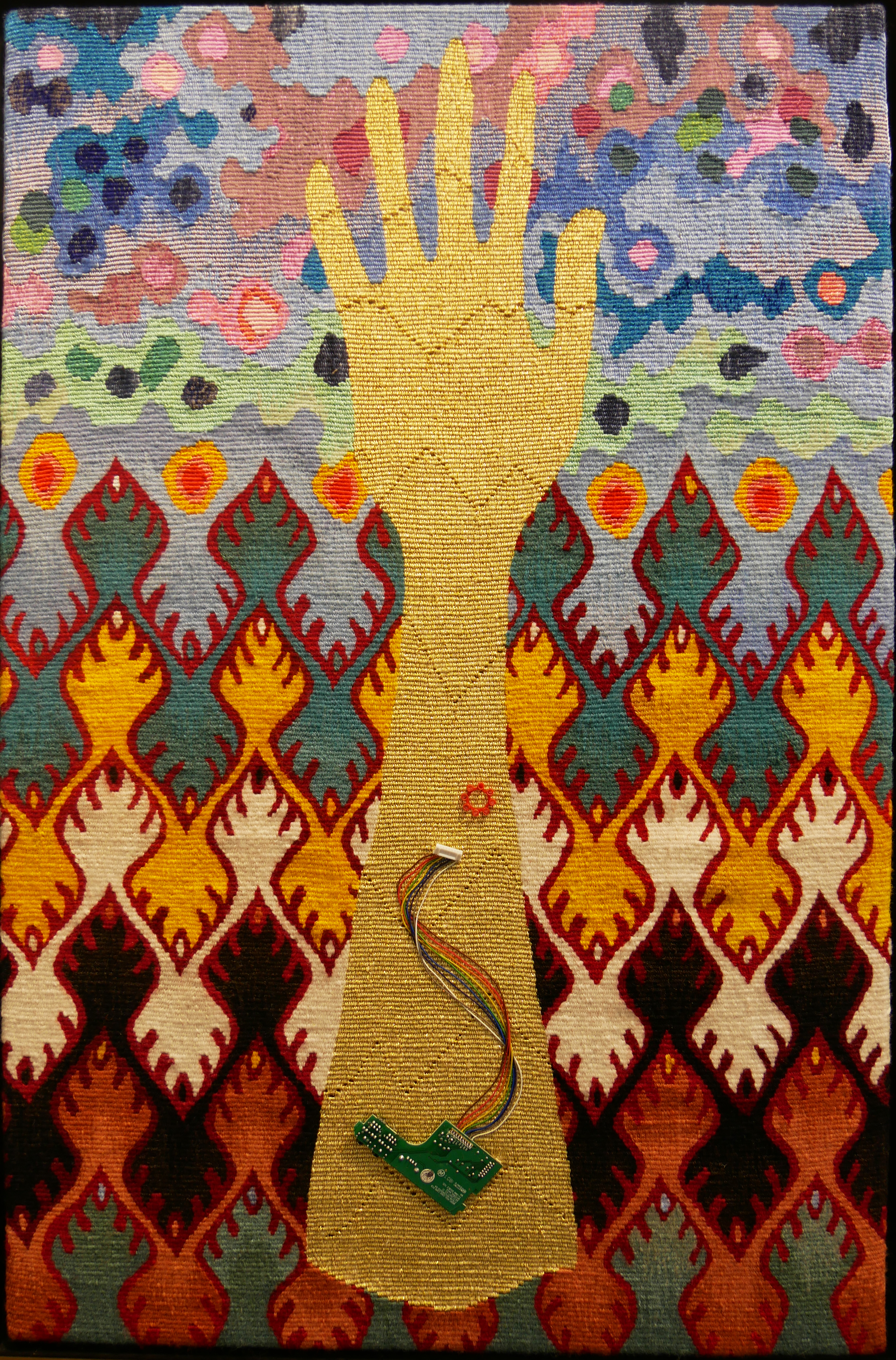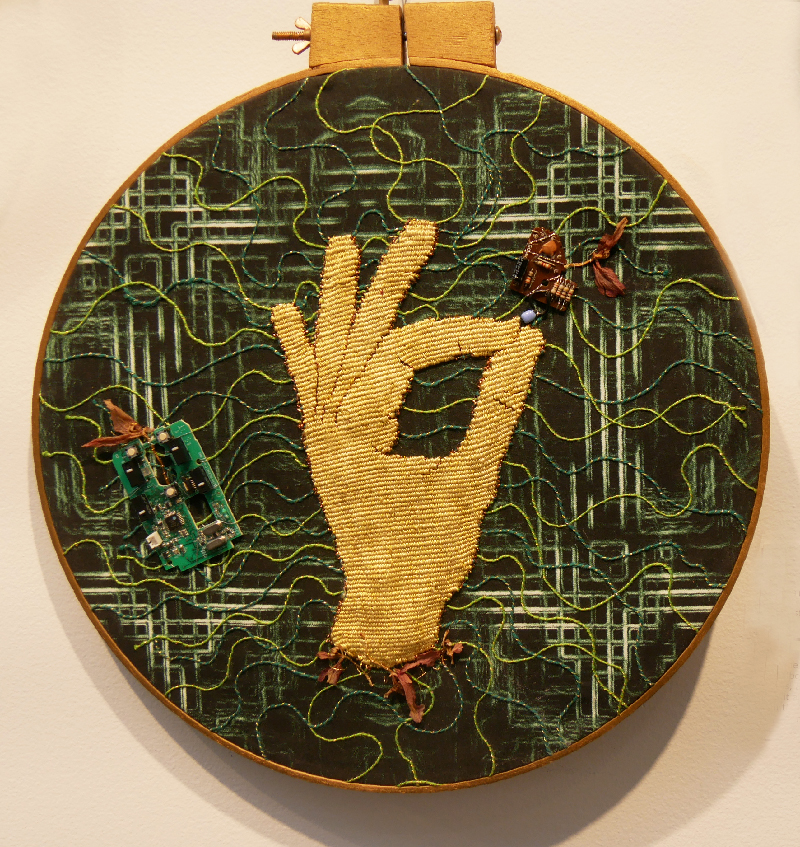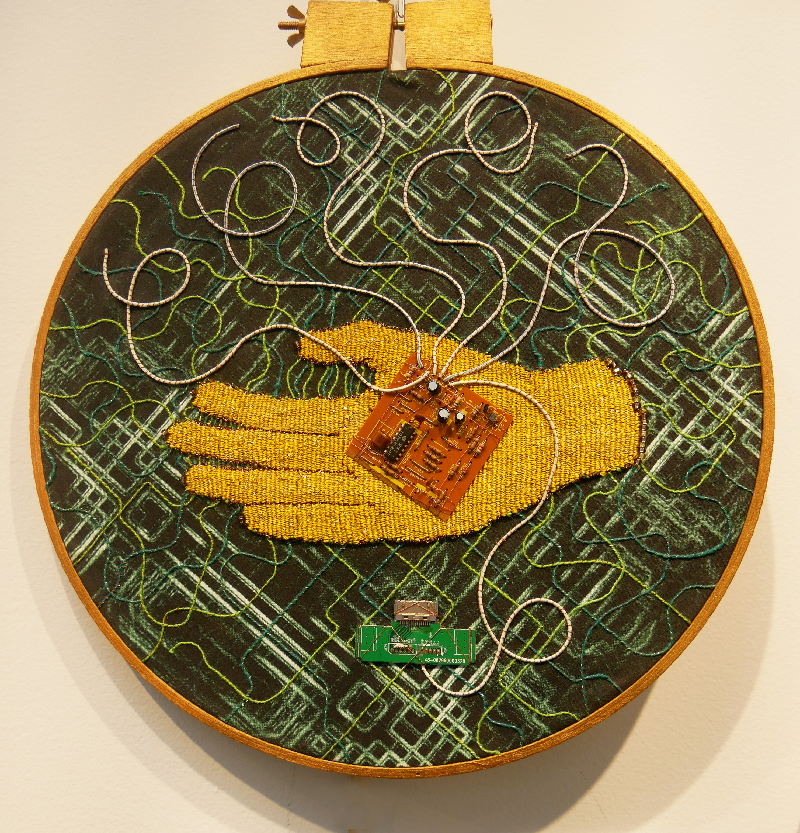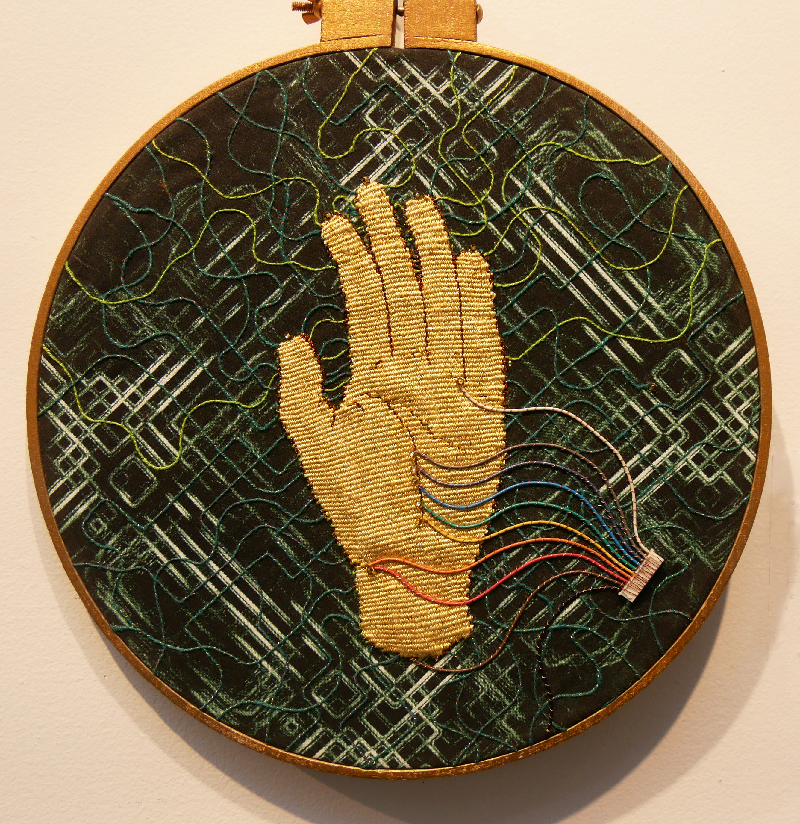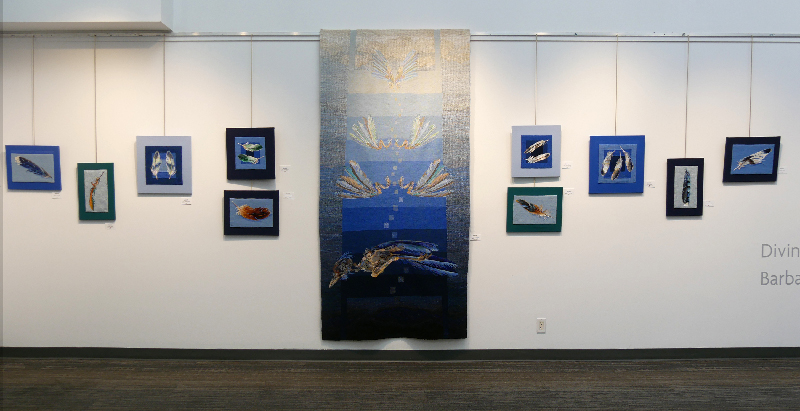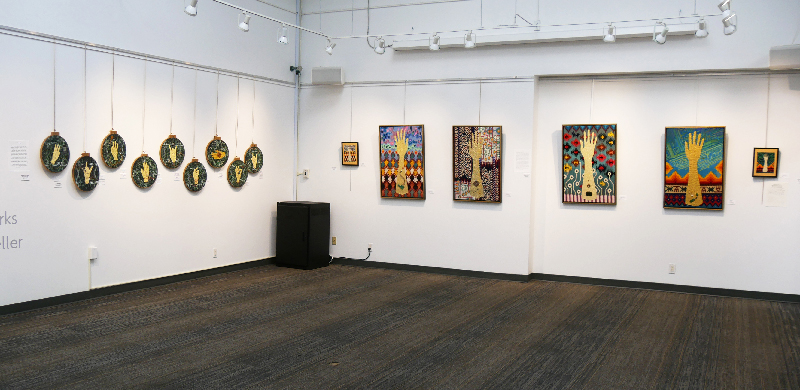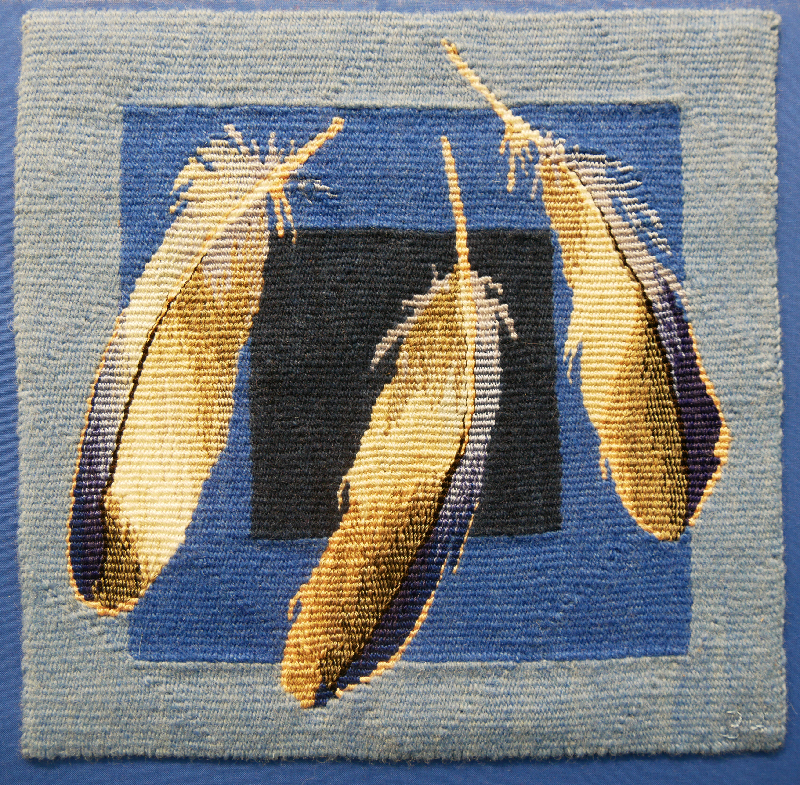
This exhibition took place from 6 September to 8 October 2018 at the Sydney and Gertrude Zack Gallery in Vancouver, Canada, under the auspices of the Textile Society of America Symposium held in Vancouver from 19 to 23 September. To me, this exhibition as well as “The Shape of Spirit” by Meghann O´Brien, a native weaver and keynote speaker, were the most important shows on view in Vancouver. Both conveyed a spiritual message about the importance of weaving as an expression of cultural identity – a universal message about the importance of craft as a medium able to transmit what words cannot express.
Barbara Heller has always chosen her subjects from what concerns and surrounds her in her daily life, being well aware of the destruction of our society, of nature. Increasingly she is finding ways to express a new hopeful dimension in her work, and this is evident in “Divine Sparks”. On the occasion of the 9/11 disaster, she used an image of a dead bird she had found in the street to express her feelings of mourning. Although the impact of that traumatic event was so enormous, her work was moving in that it focused on the destruction of just one living being, surrounded by the horrific landscape of the remaining skeletons of the towers.
Her more recent tapestry, “Tzimtzum – Transcendence” still shows a dead bird (people have been bringing her all kinds of dead birds since that first tapestry), but this time it has been placed on a ladderas a reference to Jacob´s dream, which is interpreted as the ascent of the angels who accompanied Jacob in Israel and the descent of the angels who would accompany him on his journeys. The conceptual ladder suggests that one may both ascend and descend. The purpose of ascent is to gain a higher perspective, a view from above. In the tapestry, this higher perspective is expressed through light and flying wings which disappear into the light.
The piece was previously shown at the 2016 Lodz Triennial where it was one of my favourite pieces. Next it was awarded First Prize by the American Tapestry Alliance at the World Tapestry Now competition in 2017.
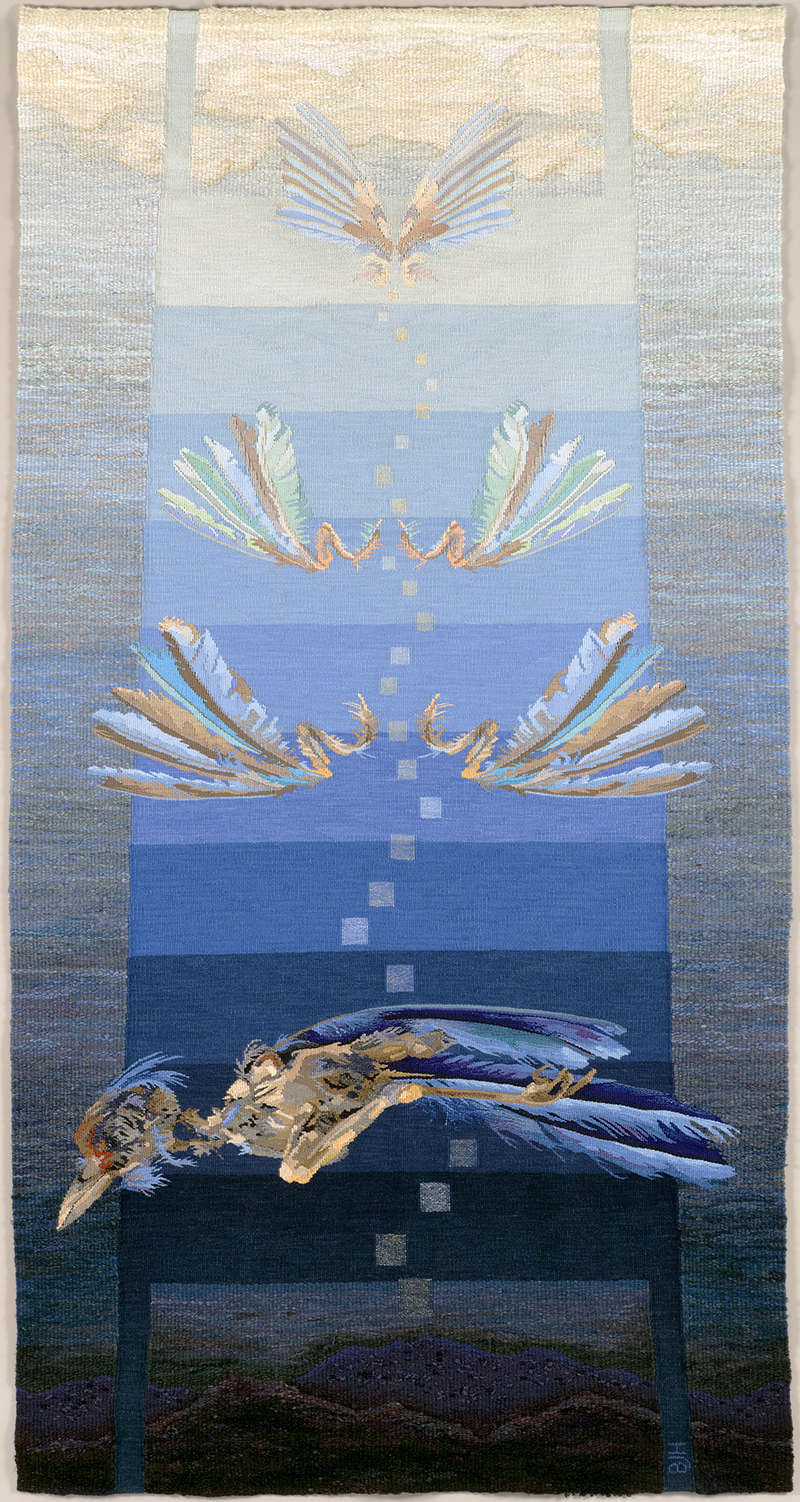
In the Vancouver exhibition, “Tzimtzum“ was the most important work on display. It was complemented by the Sephirot Series, ten small feather tapestries arranged around Tzimtzum – Transcendenceon the gallery wall, which raised the question of how we can heal the physical and spiritual universe through our daily acts. The artist explains: “In the Jewish Kabbalah, tzimtzumdescribes the first step God took to begin the process of creation by contracting his own essence to allow for enough room for our material reality.A single line of divine light flowed into the void and wrapped itself around the newly created spiritual qualities of understanding, wisdom, love, judgment, endurance, gratitude, foundation and presence, the sephirot. But these spiritual qualities were not robust enough to hold divine infinity, so they shattered and bits scattered here and there, becoming shells that trap and hide sparks of the divine light. Every day, by our good deeds,we seek to repair the darkness in this world (tikun olam), reuniting our spirit with this infinite light through the transcendence of the material universe.”
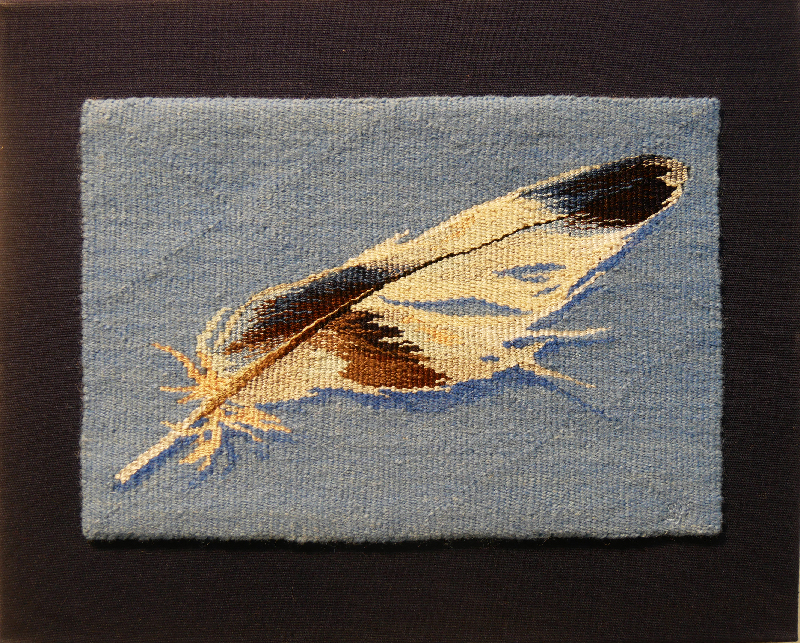
Other exhibition pieces which show a spiritual angle included “The Future Reliquary Series”, a depiction of golden hands (relics Heller had seen in the Halberstadt Cathedral in Germany) combined with ethnic textiles still woven by hand and e-waste from modern electronics: “Today we are creating a new religion, worshipping the technology we have created. The pattern of the motherboard or silicon chip morphs into the pattern of traditional ethnic textiles where complex stories are told in simple binary form”.
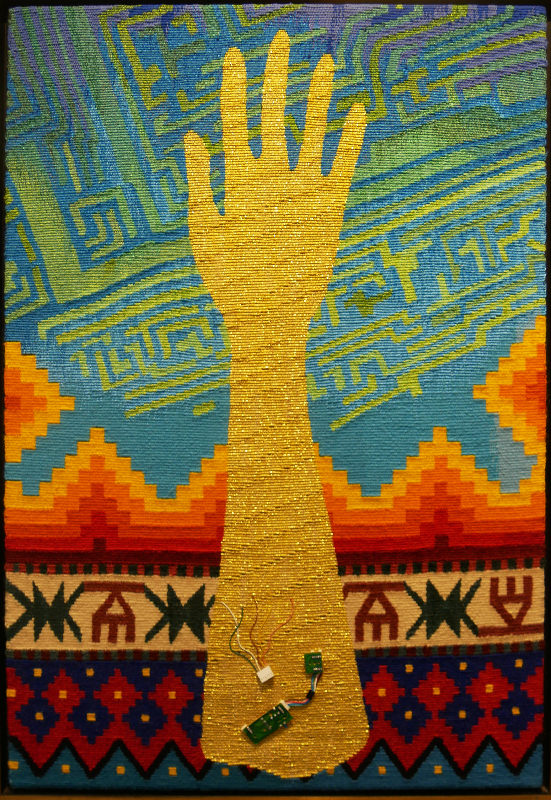
The third theme is “Mudras”, hand gestures used during meditation as a way to direct energy flow in the body. The various gestures activate different areas of the brain, symbolising diverse feelings, emotions and states of being. The square tapestry form has disappeared; the hands are woven in their actual shapes (not an easy undertaking) and then placed on a fabric printed with a “motherboard”, with the warp threads embroidered onto the ground. The whole is arranged within an embroidery frame. It is a playful way of questioning the new computer era in the light of hand work and age-old spiritual wisdom.
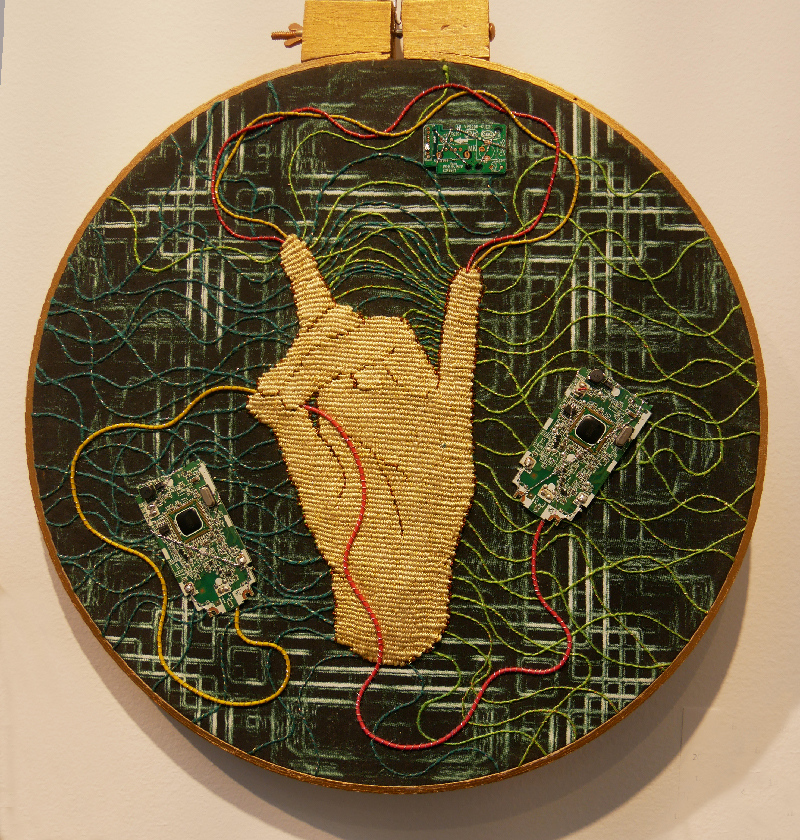
Some of Barbara Heller’s better known “Stone Walls” were also on view in the exhibition. Stone walls and transparent figures may well be the next theme we can expect – a highly poetic and almost mythical subject which she has explored before. I look forward to seeing these new creations now that she has gained such mastery of her medium.
Beatrijs Sterk
